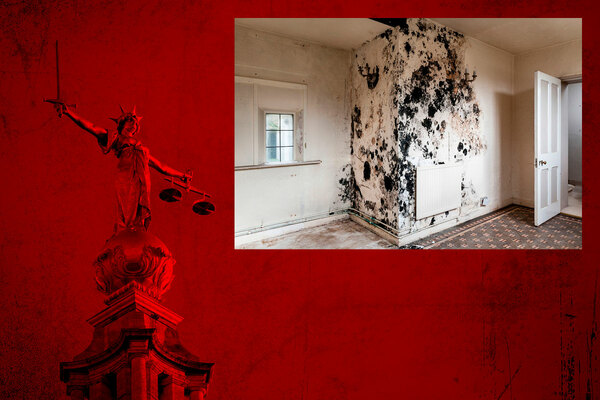You are viewing 1 of your 1 free articles
 Donna McCarthy
Donna McCarthyDonna heads up a team of over 50 lawyers based in Devonshires’ London, Leeds and Birmingham offices, advising on all aspects of housing ...more
With six weeks to go until the human habitation act rolls out more widely, landlords must be prepared
The Homes (Fitness for Human Habitation) Act 2018 rolls out to existing tenancies in just over six weeks. This will be a significant change, but the key for social landlords is making sure you are prepared, writes Donna McCarthy
The Homes (Fitness for Human Habitation) Act 2018 requires landlords to ensure that homes are fit for human habitation and marked the most significant change in the law relating to housing conditions since the Housing Act 2004.
The first phase of these provisions came into force in March last year and new tenancies granted since then have been caught by the new legislation.
While there was the usual short intake of breath from landlords, the tsunami of legal claims simply hasn’t materialised. Yet.
So, nothing to worry about for when phase two is brought in then? Well, not quite.
It is perhaps no great surprise given that new lettings are usually in good condition. The void process gives landlords an opportunity to make sure new tenancies are up to standard and a number of landlords were proactively ensuring compliance with the act before each new letting. Generally speaking, it is also much less likely for a new tenant to bring legal claims against their landlord.
The provisions will also require a lengthy ‘bedding in’ period during which the courts, and those of us advising on the new law, will have to grapple with the extent of the new provisions and exactly how they will come to work in practice. Ultimately, these will be questions for the higher courts and there simply hasn’t been enough time for these claims to work through the process of the pre-action protocol and court system to provide any case law as yet.
So, what’s next for this little but mighty piece of legislation? Well, its real teeth will be seen once the provisions come to affect nearly all existing tenancies on 20 March 2020. Some may say this is the calm before the storm, but many believe the new law will change very little and that landlords who keep their stock in good order should have little to concern them.
What will the changes mean?
Inevitably there will be questions for the courts, working out just what the provisions mean and how far the obligations will go. Claimant lawyers will be eager to push its boundaries and landlords will need to be ready to challenge appropriate cases.
The areas that traditional disrepair didn’t touch on will be fertile ground for the courts. For example, issues relating to fire safety or noise may trigger the new obligations given their tie-in with the Housing Health and Safety Rating System (HHSRS).
The roll-out of the act is also likely to result in a downturn in private prosecutions pursuant to the Environmental Protection Act, where there is much overlap.
In addition, the act puts the right to take legal action squarely in the tenant’s hands. Previously, enforcement of the HHSRS was down to individual local authorities but now tenants will be able to utilise the same to enforce poor housing standards… so long as the same renders the property unfit for human habitation. This will mark a big change for local authority landlords (who are unable to take action against itself) given their tenants can now directly enforce the HHSRS obligations.
“Be prepared, but not alarmed. It is good to bear in mind that changes are on their way and updating and reviewing policies and procedures will stand you in good stead”
In the round, whether the overall impact will be that great simply remains to be seen. There will undoubtedly be changes to the way claims are brought and we expect to see the boundaries of the legislation pushed. What must be remembered is that ultimately, even if the condition alleged is proven, the tenant will need to satisfy the court that this makes the property unfit for human habitation. Only time will tell on just how high a bar that test will be.
It should also be noted that this is not a blanket obligation on landlords – for example, there is no expectation on landlords to foot the bill if the problem was caused by the tenant’s own conduct. Likewise, there will be a defence if repair works are not possible because the landlord needs and cannot obtain the consent of a third party – such as permission from the freeholder or planning permission. If in doubt, always seek legal advice.
Don’t panic!
Be prepared, but not alarmed. It is good to bear in mind that changes are on their way and updating and reviewing policies and procedures will stand you in good stead. I have been involved in assisting a number of social landlords, including local authorities, with their preparations for the upcoming changes and these are my three top tips:
- Make sure policies and procedures are up to date
- Make sure staff understand the act and its implications
- Make sure you deal with complaints and carry out works within a reasonable period of time
While there is certainly scope for an increase in legal claims and a widening of repairing obligations, being prepared and training staff will undoubtedly mitigate the risk of claims being brought against landlords for poor housing conditions.
Donna McCarthy, partner, Devonshires











